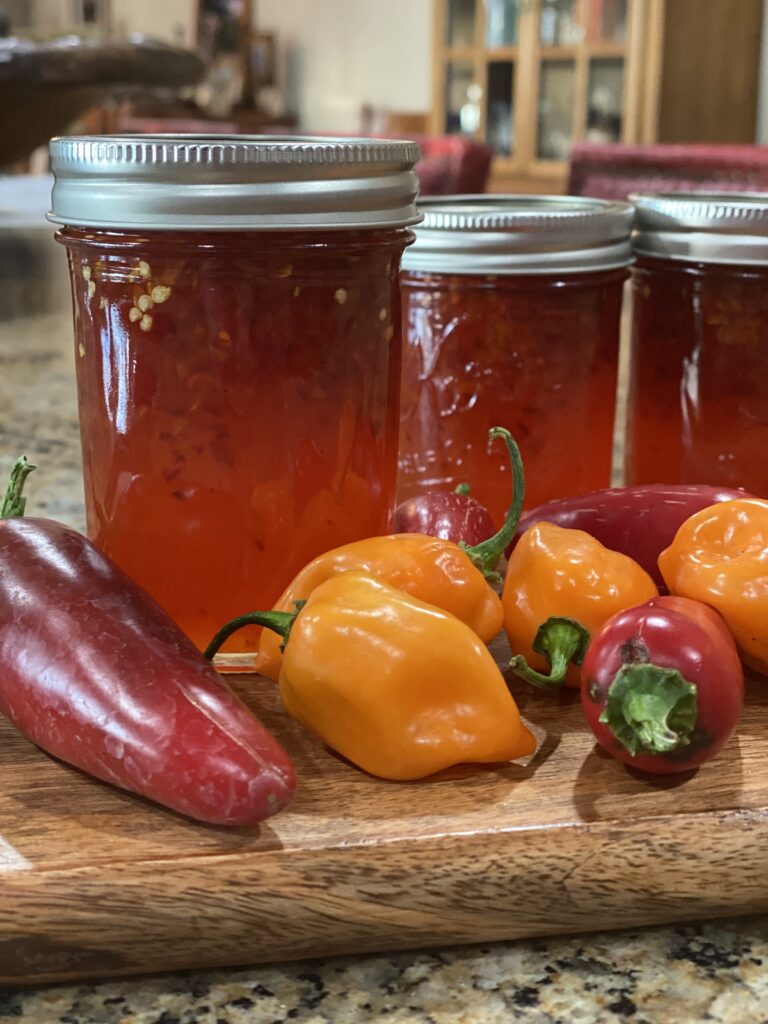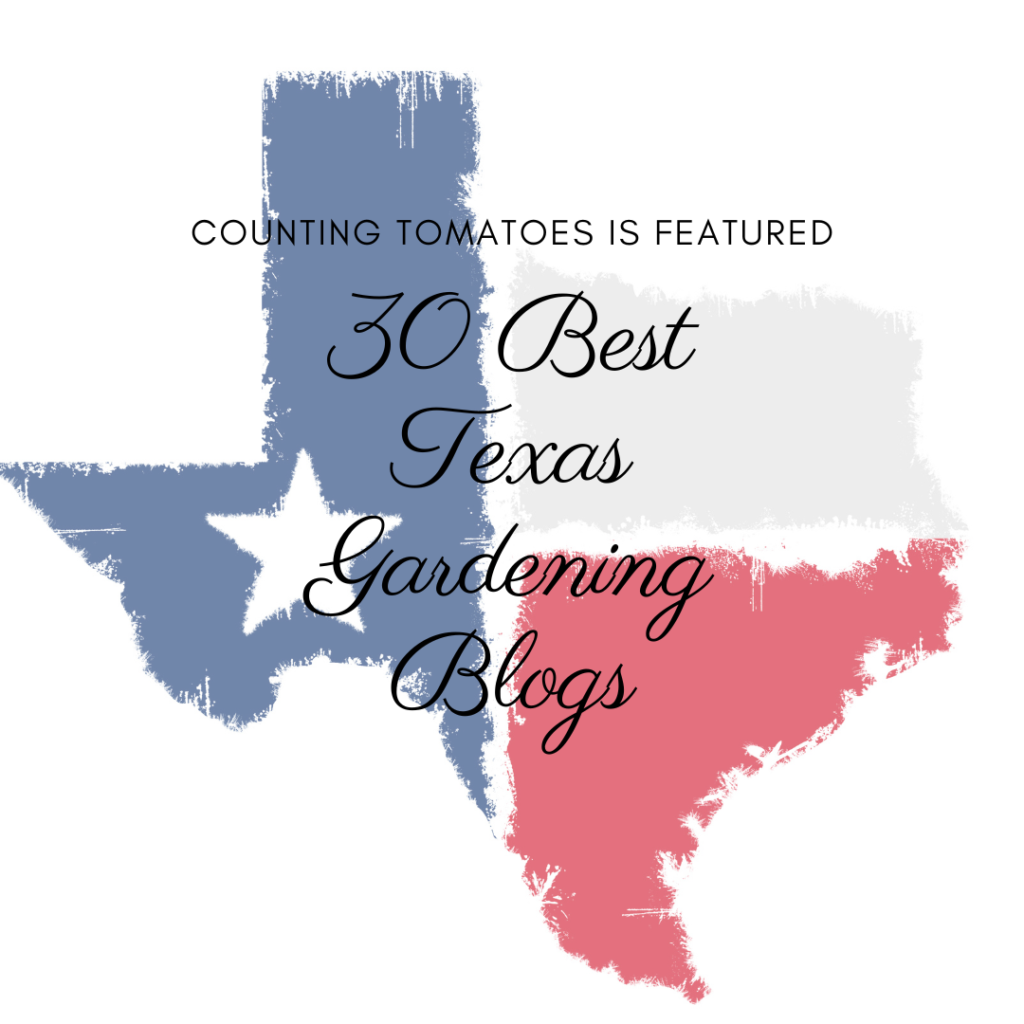Habanero peppers, capsicum chinense, are one of the hottest chili peppers around measuring over 100,000 to 575,000 Scoville heat units. Growing habaneros from seeds to harvest is a rewarding experience. We will cover all the necessary steps for successfully growing habanero peppers at home. If you’re a spicy food lover, you cannot miss the chance to grow habaneros. Whether you’re a novice gardener or an experienced green thumb, this guide will help you get started on your habanero pepper-growing journey.
Table of Contents
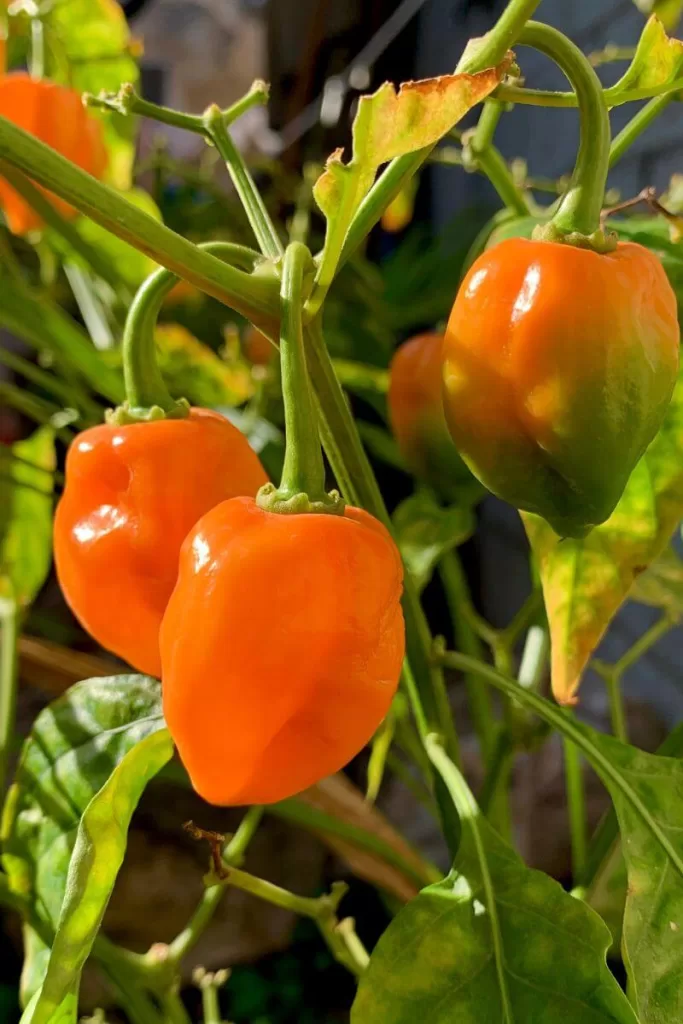
Types of Habanero Pepper Varieties
First you’ll need to pick which habanero pepper seeds you will grow. Here are some of my favorites:
Helios Habanero Pepper – This is the pepper I grow year after year! This bright orange pepper has intense heat of 75,000 Scoville units! The helios habanero pepper is a hybrid early maturing variety and produces large peppers. Even though the heat is intense it has a wonderful flavor perfect for hot sauces and my famous Habanero Hot Pepper Jelly recipe!
Yellow Habanero Pepper – Pepper Joe is the source for yellow habanero pepper seeds if you want a mild habanero. This pepper is a beautiful yellow color with a tropical taste and only measures 850 units on the Scoville heat scale. It’s all of the flavor without the intense heat.
White Habanero Pepper – The small 2″ peppers make up their size difference in heat. This white pepper is a little different color than you’d expect for such a spicy pepper. These super hot peppers measure 200,000 – 500,000 units on the Scoville scale.
How to Start Growing Habaneros from Seeds Indoors
Start growing habanero seeds indoors 8-10 weeks before you intend to transplant them outdoors. On the back of the seed packet you will see the recommended planting depth. A good rule of thumb for peppers, is to plant each seed 1/4″ deep in a seed tray filled with good quality seed starting mix. Keep the soil moist but not saturated.
Peppers germinate best in soil temperature that is 80°F – 90°F; I recommend using a heat mat when germinating all pepper seeds. A plastic dome or plastic bag can be placed over your seed starting tray to create a greenhouse effect. The trapped heat and humidity mimics a tropical climate and will aide in seed germination.
After the seeds germinate, make sure to place the seedlings under a grow light that is approximately 2″ above the top of the seedling until you’re ready to move the habanero plants outdoors.
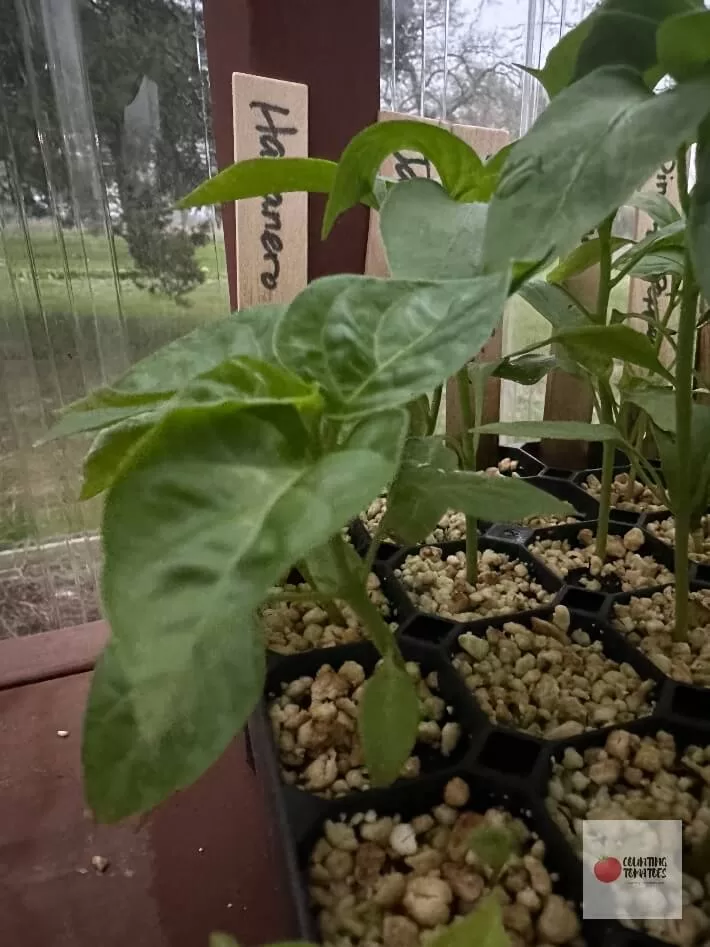
If the pepper seedlings start to experience root wrap in your seed starting trays, step up the seedlings to peat pots or other larger seedling pots. This will allow the pepper plant to grow and mature until ideal conditions planting outdoors are reached.
Where to Plant Habanero Peppers Plants
Habanero peppers thrive in warm, sunny locations. Choose a spot in your garden or yard that receives at least 8 hours of direct sunlight each day. These hot peppers thrive in well-drained soil which can be improved with compost prior to planting if needed.
If time does not allow you to start your habanero plants from seeds, visit a local nursery to pick up seedlings and proceed with the growing instructions below.
How to Plant Habanero Pepper Seedlings
Once the air temperature has consistently reached at least 55°F and you have passed the last frost date for your area, transplant your habanero pepper seedlings outdoors. This is typically around mid-spring in many parts of the world.
Space them 18 to 24 inches apart in rows that are 36 to 48 inches apart.
Create a hole and plant your pepper seedling the same depth as it is growing in its planting pot. In each planting hole, I use bone meal to promote root growth and blooms. Blood meal adds a good source of organic nitrogen which promotes healthy foliage. Pelletized gypsum for calcium and to prevent blossom end rot. Put approximately 4 tablespoons each of blood meal and bone meal, 1 cup of pelletized gypsum and mix with the native organic matter and water well.

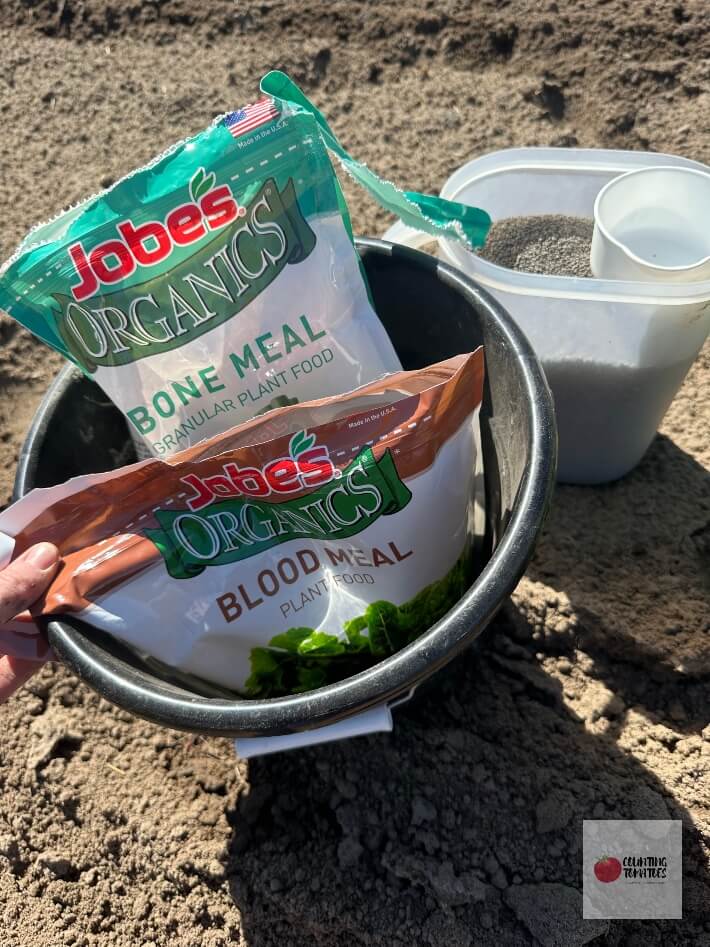
Water thoroughly after planting place bamboo cane stakes and a tomato cage around the plant to stabilize the plant. This will protect the habanero pepper plants from wind and keep them from blowing over.
Fertilizing & Watering Habanero Peppers
Habanero plants will require regular fertilization during their growing season. Use a balanced fertilizer or compost tea every two weeks for best results. At blossom set, side dress your habanero pepper plants with 1 more cup of pelletized gypsum and start using a fruit and flower promoting fertilizer. A lower nitrogen fertilizer that is higher phosphorous will promote more blossoms and fruit production.
Water is key for moving nutrients through the plants and soil. Make sure your plants are receiving 1–2 inches of water per week. You want to maintain a steady water schedule so the soil is moist but not overly saturated or dry. You do not want to stress your plants.
Pepper Plants Pests & Diseases
Pests
Habanero peppers plants can be plagued by aphids, spider mites and thrips. These are easily identifiable by seeing the insects on the plants or damages to the plant such as leaf curl and dark spots on leaves. Check both the top side and underside of leaves for pests.
Getting Rid of Pepper Plant Pests
These pests can be treated by physically removing the ones you see and by spraying with Neem oil. Mix one tablespoon of Neem oil, 1 teaspoon of castile soap with 1 gallon of water. Spray the top and bottom sides of the plants to the point of run off. Be sure to spray the neem oil before daylight or after sunset to prevent leaf burn.
Common Pepper Plant Diseases
All peppers can suffer from blossom end rot which can be a result of soil calcium deficiency or from the plants inability to absorb available calcium. Over watering can prevent the plant from uptaking available calcium in the soil. Adding pelletized gypsum to the planting hole when planting and consistent soil moisture can prevent blossom end rot.
Bacterial and fungal diseases can also plague jalapenos such as blight, mosaic virus, leaf spot and verticillium wilt. Some are caused by soil borne pathogens and some are spread by insects like aphids. The best way to prevent fungal and bacterial disease in your pepper plot is to practice crop rotation, water at the base of the plant preferably with drip irrigation, plant disease resistant varieties and keep a look out for pests.
Harvesting Habanero Peppers
Habanero peppers take about 70–90 days to reach maturity, at which point they will turn a vibrant orange to red color. Cut the peppers off of the plant with scissors or pruning shears. Wear gloves when handling habaneros as their heat can be quite intense!
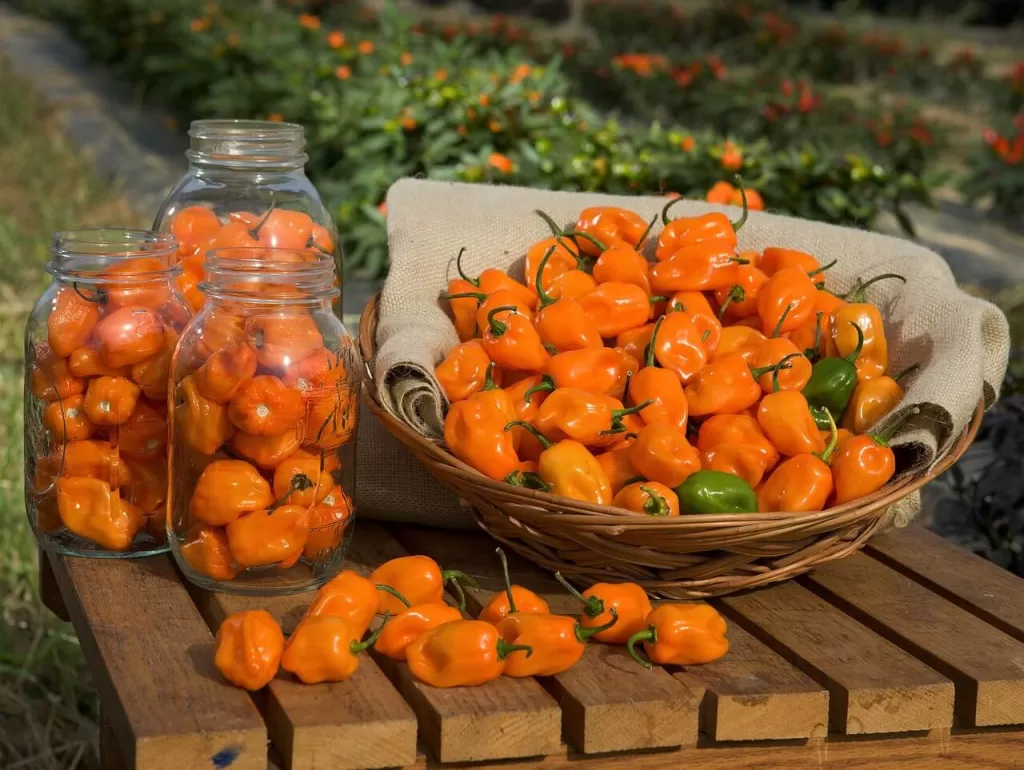
One of the common questions is always can you overwinter the pepper plants. At the end of the gardening season, protect the pepper plants by moving them indoors or wrapping them in frost protection blankets or use row covers if temperatures will be below 40°F. Overwintering pepper plants allows your plants to grow larger and stronger year after year.
Storing Habanero Peppers
The best way to store your freshly harvested habanero peppers is in an airtight container in the refrigerator. They will keep for up to two weeks this way. You can also freeze them whole or dehydrate them to extend their shelf life further.
Growing habanero peppers can be fun and rewarding if done correctly! Following these steps will help ensure a successful crop of spicy peppers year after year! Be sure not forget about regular watering and fertilization throughout the season, as well as careful pest control measures if needed – these are essential for a bumper crop! With some patience and care, soon enough you’ll have delicious homegrown habaneros ready for harvesting!
Click on the picture below to get our Habanero Hot Pepper Jelly Recipe!
